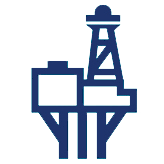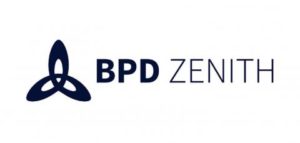For your organisation to maximise the value you get from your assets, you must consider the latest innovations and technology in the field. In such a competitive environment, it is no longer good enough to rely on the same processes designed 10 years ago.
Instead, your business benefits when it keeps one eye on the long-term and executes an agile approach to Enterprise Asset Management (EAM).
Read on for an in-depth look at how (and why) your company should take a long-term, strategic approach to asset management.
Why organisations need to invest in an EAM system, not just an ERP system
There are several significant differences between an Enterprise Asset Management (EAM) system and an Enterprise Resource Planning (ERP) system.
Traditionally, an asset-intensive company would invest in an ERP system to track and register their assets. But asset lifecycle management requires an EAM system, and it does things that an ERP system can’t do, including:
- Schedule, track, and report on asset maintenance
- Work Execution Management
- Mobility
- Monitor individual parts or asset condition to perform predictive maintenance
- Asset Management reporting to inform decision-making including asset investment
To take a strategic, long-term approach to asset management, it is critical that your organisation thinks about the full asset lifecycle, as well as the work management – and for that, you need an EAM system.

How Peacock Engineering helps clients extend the life of capital equipment and maintain regulatory compliance
Peacock Engineering work with our customers to encourage good working processes, and to standardise their working practices. When everything is incorporated within a good implementation, you get excellent asset information data captured – high quality data in, and high quality data out.
This includes failure data and maintenance history data. This, combined with real-life performance data, enables your organisation to carry out predictive maintenance and predictive analytics. You will then benefit from an increased quality of reporting outputs, including dashboards and Business Intelligence (BI) reporting.
This then helps your managers to make decisions and manage and measure their compliance, as well as manage and measure their asset life expectancy.
How is Artificial Intelligence used?
There are often complications involved with accessing different types of assets – especially hazardous assets in the field, like wind turbines.
In addition, there are dozens of different types of asset data you can collect, such as those from sensors, drones, CCTV and SCADA systems.
Artificial Intelligence (AI) enables your business to analyse asset data, and detect anomalies, automatically. It queries structured data, for example condition-based monitoring, and unstructured data, such as video and photography, and translates it into a format that your managers can understand. You get excellent, high-quality data transformed for you, which provides you with answers automatically.
What does the future of EAM look like?
Peacock Engineering are currently working with customers to consider how they can incorporate AI in their EAM strategy.
Ideally, AI will become a part of your day-to-day operations. This means that you will be listening to your assets and making the information your assets give you work hard for you, including collecting vast amounts of data, transforming that into business intelligence, and giving you the answers you need about your assets quicky with minimum effort.
If you would like an in-depth discussion about your organisation’s EAM Strategy, and how you can plan for the long term, contact Tanya Pierre-James at
tanya.pjames@peluk.org or call +44(0)203 356 9629.
Contact us now for a demo or more information about Maximo® EAM solutions for your organisation.
Call us on +44(0)20 3356 9629 or use our contact form below.
Contact us now






